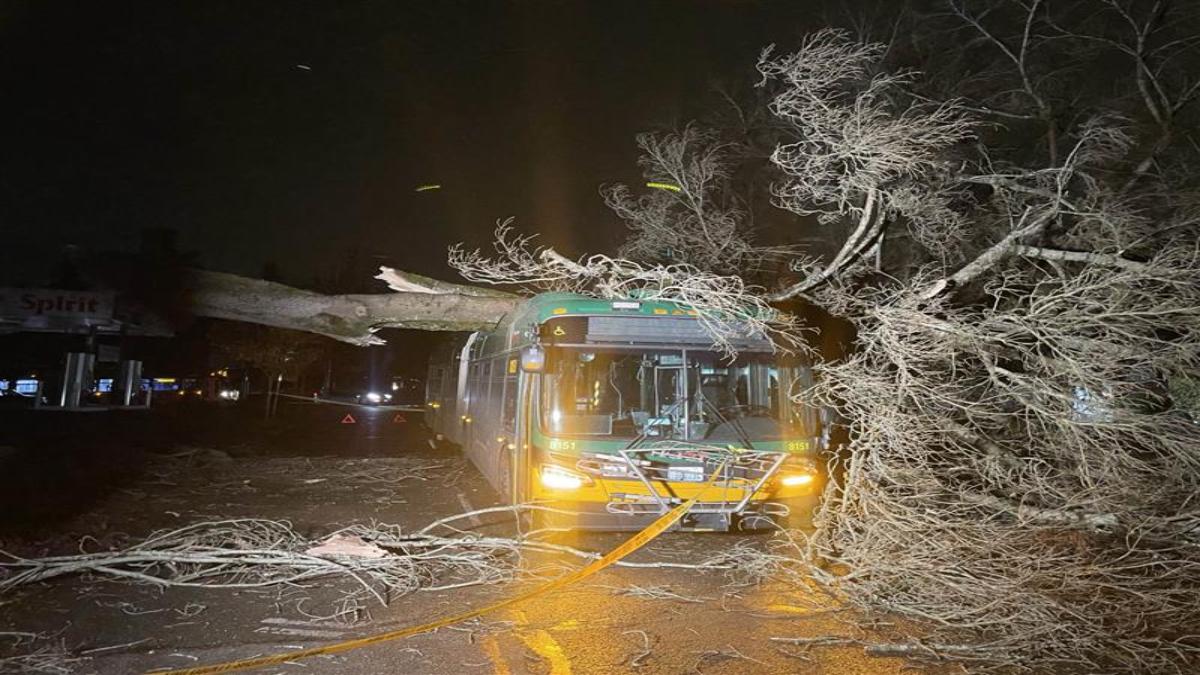
A powerful bomb cyclone wreaked havoc across the Seattle area on Tuesday night, leaving over 600,000 residents without power and causing significant damage. The storm, characterized by fierce winds reaching up to 75 mph, resulted in tragic fatalities and injuries as trees toppled across the region.
Tragic Fatalities and Injuries
In Lynnwood, a woman was killed when a tree fell into a homeless encampment. South County Fire officials confirmed the incident, stating, “The woman was found dead at the scene along Alderwood Mall Parkway”.
South of Seattle, in Maple Valley, two individuals were injured when a tree fell onto their trailer. Puget Sound Fire reported, “One person was freed quickly, but it took firefighters an hour to free the other resident who was trapped in the mangled debris”. Both were taken to local hospitals, but their conditions remain unknown.
Widespread Power Outages
The bomb cyclone’s impact was felt across Western Washington, with more than 600,000 people losing power.
An incredible view of the ‘bomb cyclone’ strengthening and approaching the Pacific Northwest. pic.twitter.com/UeKyd0VA0z
— CIRA (@CIRA_CSU) November 20, 2024
reported that over 110,000 of these outages were in the city of Seattle alone. The storm’s intensity was marked by wind gusts that reached 74 mph in Enumclaw before the wind gauge went dark, along with the rest of the town, reported Fox Weather.com.
Emergency Responses and Warnings
Emergency services were stretched thin as they responded to numerous incidents. In Bellevue, firefighters scrambled to assist multiple neighborhoods where trees had fallen onto homes.
Bellevue Fire officials advised residents, “If you can, go to the lowest floor and stay away from windows. Do not go outside if you can avoid it”. State and local city departments reported multiple main highways blocked by falling trees and power lines, including stretches of State Routes 18, 516, and 169.
#BombCyclone Batters Seattle: Multiple Trees Fall, Including One Crushing Empty King County Metro Bus; Driver Unharmed. #Cawx #wawx
📌 #Seattle | #Washington, USA 🇺🇲 pic.twitter.com/GVcvqEXOlX
— Weather monitor (@Weathermonitors) November 20, 2024
The Science Behind the Storm
The bomb cyclone, a term used when a storm’s pressure drops rapidly, underwent explosive development off the Washington coast.
The storm’s central pressure dropped 66 millibars in 24 hours, making it one of the strongest storms ever recorded in the region. The alignment of the storm with cold, dense higher pressure in eastern Washington created a tremendous pressure difference, fueling the fierce winds that pummeled the area.
Community Impact and Recovery
As the winds abated by early Wednesday morning, the focus shifted to recovery efforts. The extensive damage left many communities grappling with fallen trees, blocked roads, and power outages. “The sound out here is unreal!” said Anthony Concannon, a local resident. “The wind in the trees and power lines is deafening”

